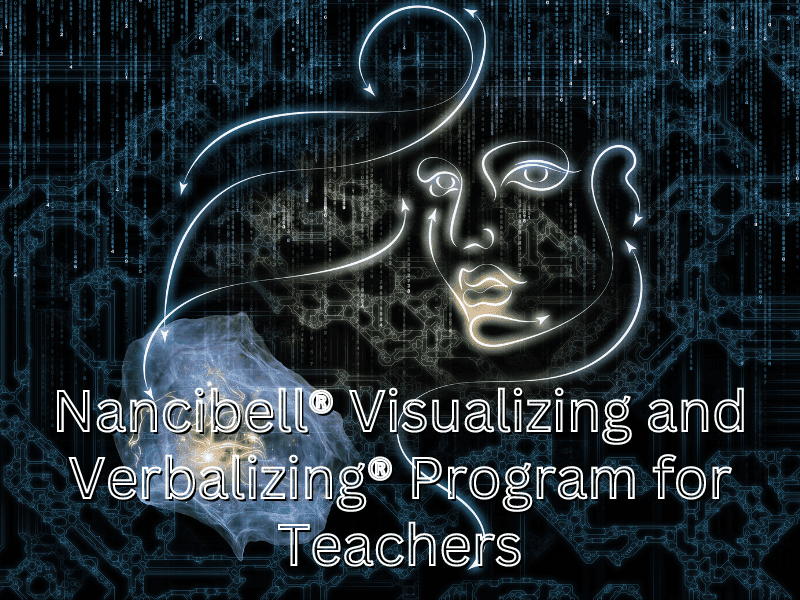Nancibell® Visualizing & Verbalizing®
Nancibell® Visualizing & Verbalizing®
This two-day workshop gives teachers training and practice in the Nancibell® Visualizing and Verbalizing® Program for Language Comprehension and Thinking®. This program helps students develop concept imagery—the ability to form mental images from oral or written language. Concept imagery has been found to enhance language comprehension, expression, following directions, and critical thinking. Students begin by describing pictures and “picturable” words. Reading comprehension is enhanced as they progress to visualizing and describing sentences, paragraphs, and longer text and apply learned skills to content area reading.
Participants may take this course for one graduate credit through Fitchburg State University. An additional fee of $210, payable through the instructor, will apply.
18 PDPs
View our training schedule for upcoming Nancibell® Visualizing & Verbalizing® for Language Comprehension and Thinking trainings. [expand title=” “]
Improving Your Skills with the Nancibell® Visualizing and Verbalizing® Program

The Nancibell Visualizing and Verbalizing Program is a powerful tool to help people improve their ability to create, express, and understand visual images. This program uses auditory, visual, and kinesthetic strategies to train individuals in visualizing and verbalizing so that they can become better readers, writers, speakers, and problem-solvers. The program has been shown to be effective in improving people’s ability to create visual images and express them verbally, as well as their ability to comprehend complex material more easily. It is a comprehensive program that can help individuals develop their abilities to imagine, understand, and communicate more effectively.
Benefits of ®Visualizing and Verbalizing® Training
The Nancibell Visualizing and Verbalizing Program provides individuals with the opportunity to improve their ability to create and express visual images. By participating in the program, students can develop their ability to understand stories more easily and become more engaged in the educational process. This type of training also improves problem-solving skills, as it teaches students to think in terms of patterns and to see connections between ideas. Additionally, individuals can better understand how to communicate their ideas clearly and effectively.
The visualizing and verbalizing training offered by the program has been shown to improve children’s overall abilities to understand and process language. The program also encourages students to think creatively, which helps to enhance their imagination and develop their critical thinking skills. With the help of the program, students can develop a better ability to interpret information and create meaningful connections.
You will learn how to teach students to describe words with them eventually progressing to describing longer text.
Auditory, Visual, and Kinesthetic Strategies Used by the Program
The Nancibell Visualizing and Verbalizing Program uses auditory, visual, and kinesthetic strategies to help individuals develop their ability to create and express visual images.
- Auditory strategies include the use of spoken words, stories, music, and sound effects.
- Visual strategies involve using pictures, diagrams, and other visuals to help individuals understand new concepts.
- Kinesthetic strategies involve the use of physical activities and gestures to help individuals connect with the material.
By incorporating these various strategies, the program provides a comprehensive approach to understanding and expressing visual images. After the program, individuals can better understand education and school instruction.
[/expand]
The Commonwealth Learning Center is an independent, non-profit teaching facility and is not affiliated with Lindamood-Bell Learning Processes, Pat Lindamood, Phyllis Lindamood, or Nanci Bell.
Sign Up to Stay in the Know!
Workshops, Programs, Announcements and More





